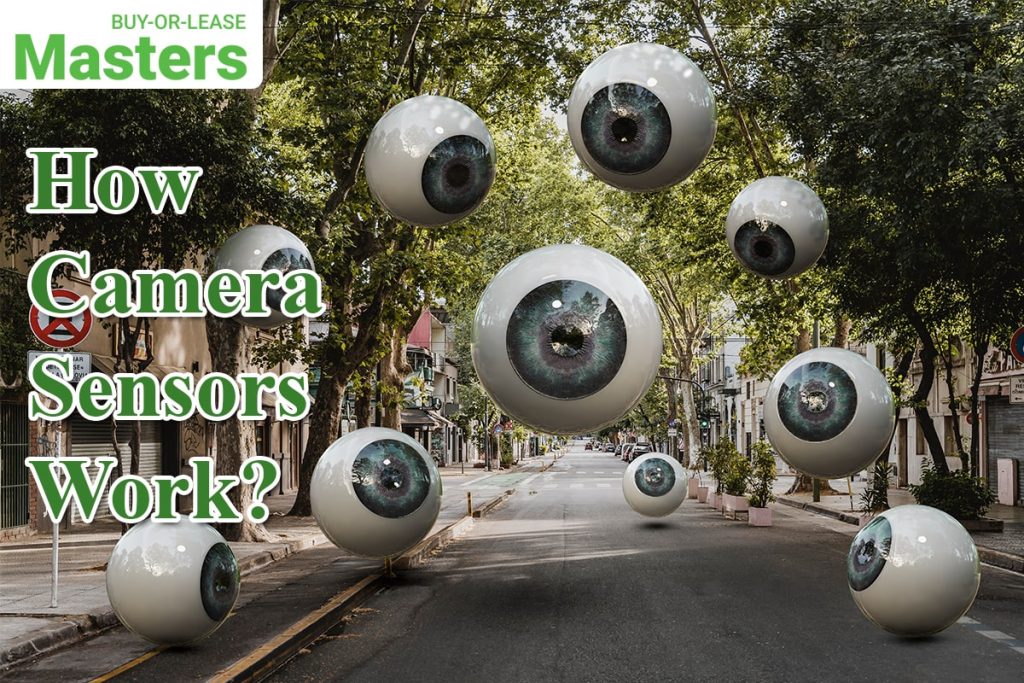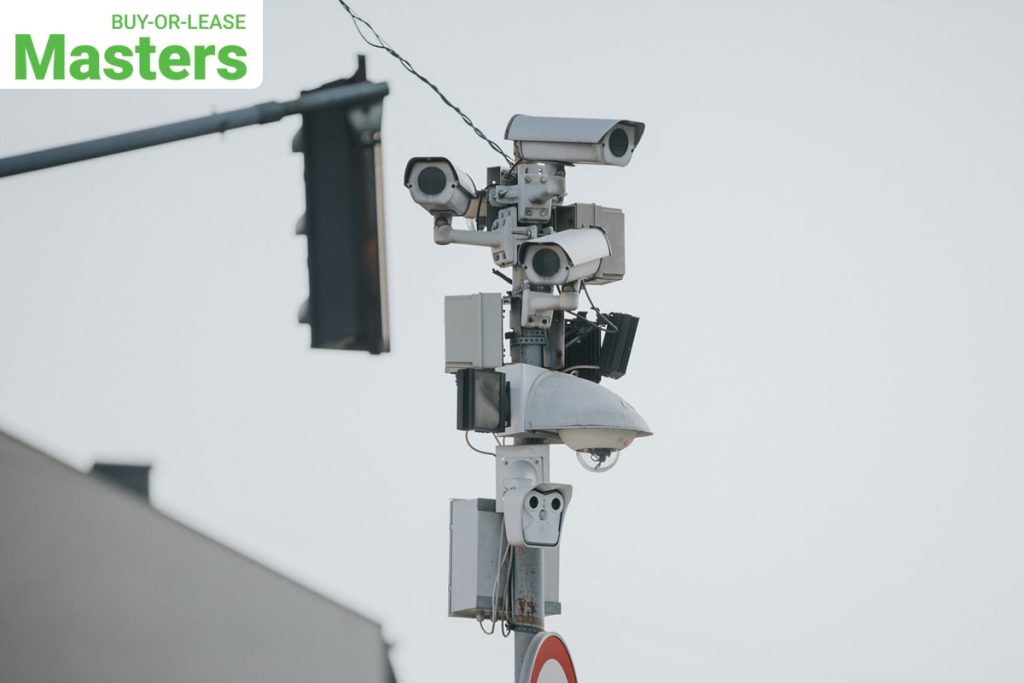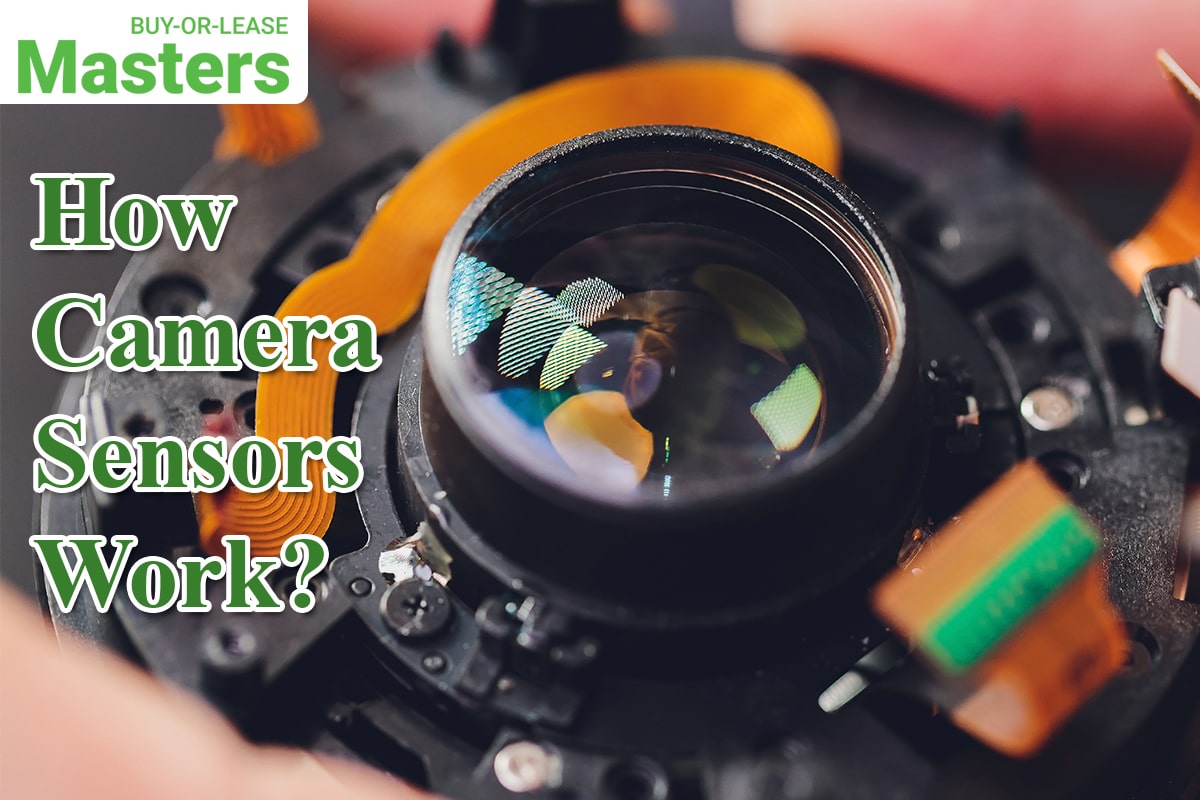Your camera is one of the most important tools in your arsenal, capturing stunning images and unique moments that you can relish for years to come. To understand how a digital camera works, it helps to first gain an understanding of how the device’s integral component – its sensor – functions.
In this article, Mastersbuyorlease we will walk through the basics of how camera sensors work, from capturing light into processing pixels for brilliant pictures. By exploring this essential aspect of photography, you can sharpen your expertise and create better photographic masterpieces than ever before.
Now, we will provide an in-depth analysis of various camera sensor types and their specifications, encompassing a comprehensive understanding of:
- Charge-coupled device (CCD)
- Electron-multiplying charge-coupled device (EMCCD)
- Complementary metal-oxide-semiconductor (CMOS)
- Back-illuminated CMOS
What is a Camera Sensor?

At the heart of every camera is a light-sensitive device known as a sensor that converts light into electrical signals.
The sensor is an electronic chip composed of millions of individual photosensitive elements, each capable of capturing and converting light photons into digital data.
How Does Camera sensors Work?
To begin with, the sensor is responsible for capturing light through the camera lens. Light enters the lens and passes through a series of elements before reaching the sensor. These elements are designed to control how much light enters the camera and guide it towards the sensor.
Once these light particles reach the sensor, they strike individual photosensitive units called “photodiodes.” The number of photodiodes on the sensor is known as its resolution, and it determines how sharp and detailed an image can be.
When a light photon strikes a photodiode, it generates an electrical charge that corresponds to the brightness and color of the light particle. These charges are then collected by the camera’s built-in circuitry and converted into digital signals.
Processing Pixels
After the sensor has captured all the light photons from the scene, it directs the electrical charges to a chip called Analog-to-Digital Converter (ADC).
The ADC then converts these analog signals into digital data by measuring the electrical charge of each pixel and assigning a number to represent its value.
These numbers are then processed by the camera’s internal software, which converts them into individual pixels. The pixels are then translated into a digital image that you can view on your camera screen or save to your memory card.
Types of Camera Sensors

There are two main types of camera sensors: CCD (Charge-Coupled Device) and CMOS (Complementary Metal Oxide Semiconductor).
CCD is the older technology but still used in some high-end cameras. It works by capturing a single charge and sending it across the chip to be read out.
On the other hand, CMOS sensors use transistors at each pixel that amplifies the signal before it is converted into a digital value.
CMOS sensors are more energy-efficient, resulting in longer battery life. The two major types of CMOS sensors are Front-illuminated CMOS and Back-illuminated CMOS.
- Charge-coupled device (CCD) sensors
A CCD sensor is composed of an array of photodiodes that work together to capture light particles and convert them into electrical charges. The charges are then transferred row-by-row to the camera’s internal circuitry, which converts these values into digital data.
CCD sensors offer high-quality images with minimal noise, making them ideal for professional photography. However, they consume more power and are slower at processing compared to CMOS sensors.
- Electron-multiplying charge-coupled device (EMCCD) sensors
EMCCD, an upgraded version of CCD, allows the multiplication of the electrical charge as it moves across the chip. This results in significantly higher sensitivity and less noise, making it preferable for low-light photography.
- Complementary metal-oxide-semiconductor (CMOS) sensors
CMOS sensors use transistors at each pixel to amplify the signal before converting it into a digital value. This makes them more energy-efficient, resulting in longer battery life.
- Back-illuminated CMOS sensors
Back-illuminated CMOS sensors have their wiring and circuitry moved to the back of the sensor, allowing more light to reach the photosensitive elements. This results in improved low-light performance and higher sensitivity compared to front-illuminated CMOS sensors.
A Deeper Look into How Light is Captured in Each Pixel
Each photosensitive unit on the sensor is known as a pixel. The word “pixel” comes from the phrase “picture element,” which refers to the smallest unit of an image.
An individual pixel captures light and converts it into digital data.
When light photons enter the lens, they pass through a color filter array before reaching the pixels. This filter helps determine what color each pixel will be by allowing only certain colors of light to pass through.
After the photons have reached their designated pixels, they are converted into digital data and processed by the camera’s software. The result is a beautiful image that captures all the details and colors of the scene.
Why Camera Sensors is Important for Photographers?
The camera sensor determines the overall quality and detail of an image. A larger sensor with higher resolution will produce sharper images with more depth and dynamic range.
Photographers must also consider the sensor’s size in relation to the lens, as this affects factors such as low-light performance, noise reduction, and depth of field.
Understanding how different sensors work can help you choose the right camera for your needs, and enable you to make the most of its features to produce stunning images.
Tips to Get the Most Out of Your Camera Sensor
- Experiment with ISO settings to find the right balance between sensitivity and noise.
- Utilize different lens sizes to achieve various depths of field and perspective.
- Consider investing in a camera with a larger sensor for better image quality.
- Learn how to use manual mode on your camera to have more control over the sensor’s performance.
Conclusion
As we can see from this article, different camera sensors come with their own unique characteristics and usages. The Charge-coupled device (CCD) captures precise details in low-light settings, while the Electron-multiplying charge-coupled device (EMCCD) allow for very high sensitivity and speed operations. Additionally, the Complementary metal-oxide-semiconductor (CMOS) offers great dynamic range as well as higher resolutions at a reduced cost to create excellent images in available light conditions. Lastly, the Back-Illuminated CMOS provides an inverted structure for better performance in low lighting scenarios where bright ambient light is available.
When choosing which camera sensor you want to use for your creative project, it is important to carefully compare each option based on your needs and preferences. Taking into consideration all these factors will ensure that you get the most out of your shots and deliver spectacular results! If you have any further questions or comments about how camera sensors work make sure to leave a comment below.
Frequently Asked Questions About Camera Sensors
How do camera sensors detect light?
Camera sensors work by converting light particles (photons) into electrical charges, which are then converted into digital data.
What is the difference between CCD and CMOS sensors?
The main difference between CCD (Charge-Coupled Device) and CMOS (Complementary Metal Oxide Semiconductor) sensors is in how they capture and convert light. While CCD uses a single charge to be transferred across the chip, CMOS uses transistors at each pixel to amplify the signal before converting it into digital data. CCD sensors offer higher image quality with less noise, while CMOS sensors are more energy-efficient and result in longer battery life.
How does a sensor record an image?
Once the light reaches the sensor, it is converted into electrical charges and then processed by the camera’s internal circuitry. The result is a digital image that captures all the details and colors of the scene. Some sensors also have built-in color filters to help determine what color each pixel will be. Overall, the sensor plays a crucial role in capturing high-quality images, making it an essential component in any camera. So, the next time you take a photo, remember to thank the sensor for its incredible work behind the scenes!
What are the advantages of using a larger sensor?
A larger sensor offers higher resolution and better image quality with more depth and dynamic range. It also allows for better low-light performance, noise reduction, and enables photographers to achieve a shallow depth of field. However, larger sensors also come with a higher cost, so it is essential to weigh the options and choose what works best for your needs and budget.
References
- Simons, Alexey. (2020). Understanding Camera Sensors: CCD vs CMOS & their pros/cons in 2020. In Photography Life. Retrieved from https://photographylife.com/cmos-vs-ccd-sensors
- Kishore, Raj. (2018). Understanding Camera Sensors: An Easy Guide for Photographers. In Digital Photography School. Retrieved from https://digital-photography-school.com/understanding-camera-sensors/
- Gurung, Rajib Mukherjee and Sagar. (2021). The Difference Between CCD and CMOS Sensors. In Photography Life. Retrieved from https://photographylife.com/the-difference-between-ccd-and-cmos-sensors


Leave a Reply